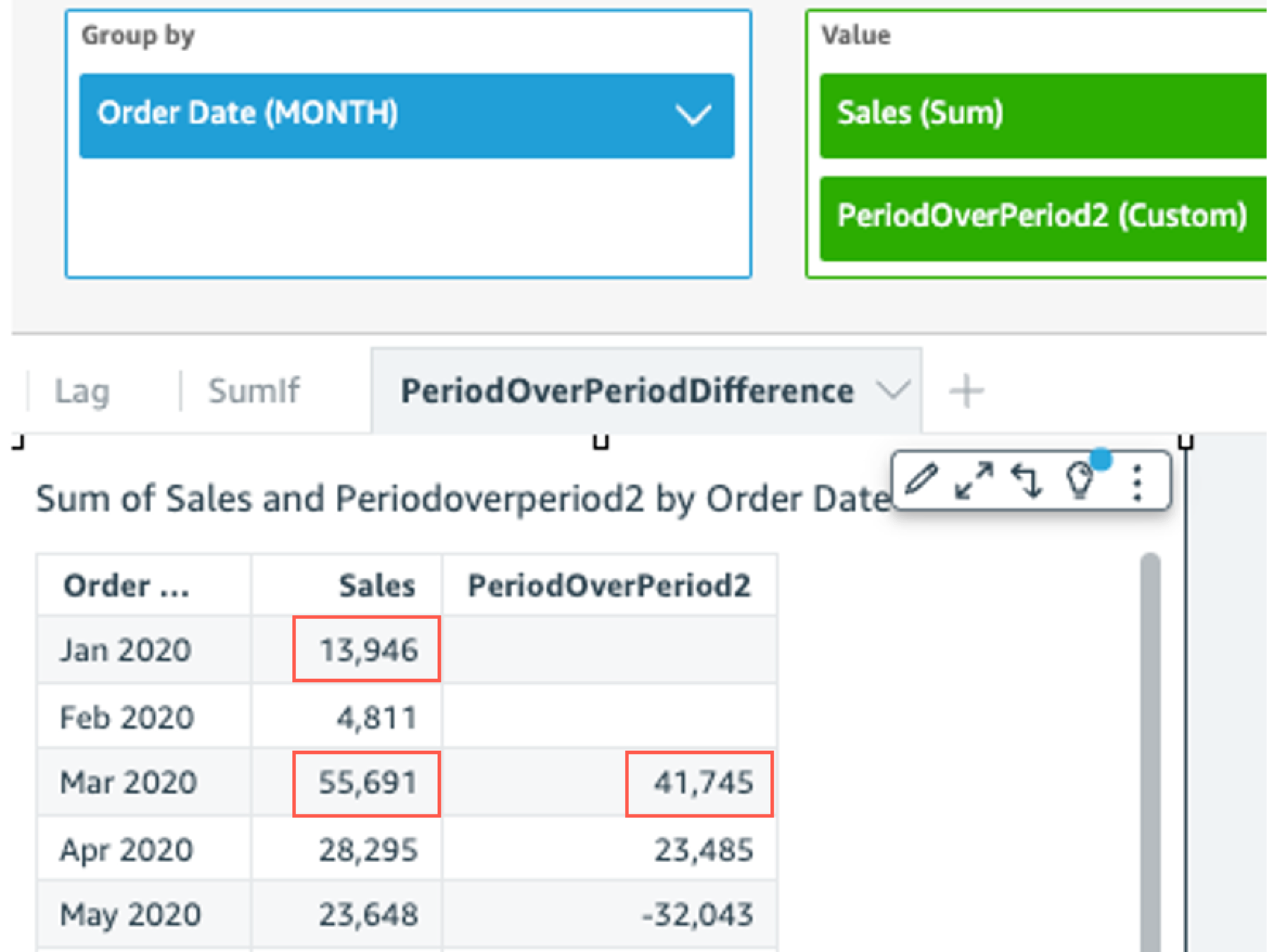periodOverPeriodDifference
The periodOverPeriodDifference function calculates the difference of a measure over two different time periods as specified by period granularity and offset. Unlike a difference calculation, this function uses a date-based offset instead of a fixed sized offset. This ensures that only the correct dates are compared, even if data points are missing in the dataset.
Syntax
periodOverPeriodDifference( measure, date, period, offset)
Arguments
- measure
-
An aggregated measure that you want to perform the periodOverPeriod calculation on.
- dateTime
-
The Date dimension over which we are computing Period-Over-Period calculations.
- period
-
(Optional) The time period across which you're computing the computation. Granularity of
YEARmeansYearToDatecomputation,QuartermeansQuarterToDate, and so on. Valid granularities includeYEAR,QUARTER,MONTH,WEEK,DAY,HOUR,MINUTE, andSECONDS.The defaults value is the visual date dimension granularity.
- offset
-
(Optional) The offset can be a positive or negative integer representing the prior time period (specified by period) that you want to compare against. For instance, period of a quarter with offset 1 means comparing against the previous quarter.
The default value is 1.
Example
The following example uses a calculated field PeriodOverPeriod to display the sales amount difference of yesterday
periodOverPeriodDifference(sum(Sales), {Order Date})

The following example uses a calculated field PeriodOverPeriod to display the sales amount difference of previous 2 months. Below example is comparing sales of Mar2020 with Jan2020.
periodOverPeriodDifference(sum(Sales),{Order Date}, MONTH, 1)
